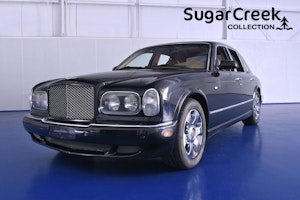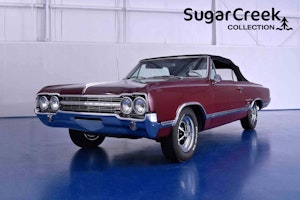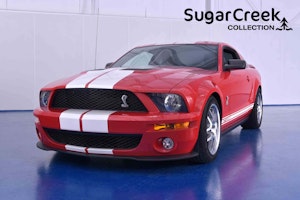Media | Articles
Today’s turbo revival is rooted in the ‘80s
Today, it’s no big deal to find a turbocharged engine on a mainstream family car. Small-displacement turbo fours have become ubiquitous on the road toward meeting higher fuel economy requirements. Sound familiar?
Three decades ago, many carmakers turned to turbos to boost fading performance. At the time, the V-8’s future appeared uncertain, and turbos seemed like the magic elixir for squeezing “free” horsepower from smaller engines. The Buick Grand National might have been the turbo big kahuna, but there were other turbo stars. Here are 10 worth remembering. (If you don’t see your favorite, give it a shout-out in the comments section.)
The Datsun Z lost some of its performance edge when it became the bulkier 280ZX in 1979. Horsepower sagged, but comfort was way up and sales soared. For 1981, the Z got its mojo back with a 180-horsepower turbo six. The first year was automatic only, but a proper 5-speed stick arrived for 1982. In a Car and Driver comparison test, the turbo-boosted Z car matched a Corvette and smoked a Ferrari 308 GTSi. Take that, Magnum.
1982-1989 Chrysler Conquest/ Mitsubishi Starion
Marketplace
Buy and sell classics with confidence
Mitsubishi’s turbo lineage stretches way back before the Lancer Evo. The 1983 Starion put a 145-horsepower, 2.6-liter turbo four in a rear-drive sport coupe. An intercooler pushed that to 170 hp and 220 lb.-ft. of torque in late 1985, when Car and Driver called the Starion a “sophisticated driver’s car.” Chrysler/Plymouth and Dodge dealers sold the car as the Conquest. A widebody Starion ESi (and Conquest TSi) arrived in 1986, and horsepower reached 188 in 1988, accompanied by chassis tweaks. Mitsubishi had produced a legitimate budget Porsche 944.
Redeeming its sins of earlier turbocharged Mustang clunkers, Ford put its Special Vehicle Operations group on the case. The result was the 1984 SVO Mustang, a Euro-flavored coupe aimed at the Porsche and BMW crowd. Beneath its odd-looking offset hood scoop, the SVO packed a respectable 175 horsepower from a turbo/intercooled 2.3-liter four-banger. Horsepower was 200 for 1986.
Tweaked suspension made the SVO a superb handler, but this $16,000 Euro-flavored pony cost about $6,000 more than a quicker V8 Mustang. No wonder Ford sold just 9,844 SVO Mustangs. Perhaps the current Mustang’s EcoBoost option – a 320 horsepower 2.3-liter turbo four – is the SVO’s vindication.
1985-1992 Volvo 740 Turbo Wagon
Volvo revved up its image in the 1980s with turbocharged models, but none was so endearingly contrarian as the 740 Turbo wagon. With the 160-horse 2.3-liter four-cylinder engine, it could run from 0–60 in a little over 8 seconds – not too shabby for a family hauler with Volvo safety and 74 cubic feet of carrying space. Volvo used some clever advertising, one headline audaciously claiming, “Until Ferrari builds a wagon, this is it.” Volvo Cars North America backed an independent two-car team of these family haulers in the SCCA Showroom Stock series. They finished every race and even set some lap records.
When you think “Porsche Turbo,” the whale-tail 911 probably comes to mind. But Porsche offered its turbo tech in something more affordable in the 1980s, if you can call $47,600 in 1989 ($100,000 in today’s dollars) “affordable.”
Though this front-engine coupe was never fully accepted by some Porsche faithful, Porsche was unrelenting in its mission to make the 944 a notable sports car. In 1985, Porsche issued the 944 Turbo with 217 horsepower and chassis upgrades. Horsepower reached 247 in the 1987 Turbo S, which road testers found could go from 0–60 mph in 5.5 seconds and top out at 160 mph.
1987-1988 Ford Thunderbird Turbo Coupe
Ford’s Thunderbird Turbo Coupe debuted for 1984, but this boosted ’Bird didn’t truly fly until a 1987 redesign brought a smorgasbord of major mechanical upgrades. Chief among those was the vastly improved engine from the SVO Mustang, making 190 horses with the 5-speed manual (150 hp with the automatic).
The ’87 Turbo Coupe, which started at $16,800, also featured four-wheel disc brakes with ABS and 16-inch alloy wheels and was the first American car with automatically adjusting electronically controlled shocks. An eight second 0–60 time sounds slow today but was on par with the $24,000 BMW 325i coupe. Ford sold about 60,000 units over two years.
1986-1987 Dodge Charger Shelby GLHS
Of all the Shelby-branded cars to come after the 1965-1966 Mustang GT350, the Dodge-based GHLS (“Goes Like Hell Some more”) duo probably came closest to matching the original formula: bare-bones machines focused on performance, period. The GLHS models were rude, crude and fast.
For the 1986 GLHS, Shelby’s operation modified Dodge’s production Omni GLH Turbo with an intercooler and other parts from the Chrysler Turbo II engine. The 175 horses and 175 lb.-ft. of torque could pull this 2,200-lb. front-drive box from 0– 60 in 6.5 seconds and down the quarter-mile in 14.9 seconds. That was, coincidentally, about as quick as a 1965 Shelby GT350. Shelby built 500 of these $10,800 hot hatches and then, for 1986, built 1,000 based on Dodge’s Shelby Charger.
1987-1990 Dodge Daytona Shelby Z
The prevalence of Shelby’s name on Dodge products in the 1980s caused some confusion. Some were built by Chrysler, while others were modified by Shelby. The Dodge Daytona Shelby Z was one of the former, and one of the best. First, it used the stout Turbo II engine (5-speed), which included a beefed up block. Accordingly, Dodge reinforced the driveline, too. With 174 horsepower and 200 lb.-ft. of torque, the Shelby Z could run 0–60 in the low sevens, on par with the SVO Mustang. Handling was excellent, and interior refinement was much better than its unruly Shelby GLHS relatives.
1989 Shelby CSX-VNT
And here we have, oh, another Shelby Dodge – as a matter of fact, the last one. This one is something of a landmark car. The 1987 CSX, based on the Dodge Shadow, put the GLHS powertrain into a more comfortable and civilized package. For 1989, Shelby went all out, putting the first variable-nozzle turbine (VNT) turbocharger in a production car (and beating Porsche by about 17 years.) The VNT reduced turbo lag dramatically. The CSX-VNT was also the first production car with composite wheels. Shelby made just 500.
1989 Pontiac Trans-Am 20th Anniversary Edition
By the time its 20th anniversary rolled around, the Pontiac Trans-Am was using Chevy V8s. Pontiac, though, wanted to make an even stronger performance statement than the Corvette’s 5.7 TPI unit. So, it pulled Buick’s intercooled turbo V-6 out of retirement and made some tweaks. Pontiac rated the engine at 250 horsepower, but with Car and Driver clocking a 4.6-second 0–60, the magazine estimated (probably correctly) output at 300 honest horses. The 1989 Turbo Trans-Am was the quickest American production car at the time and served as the Indianapolis 500 Pace Car without requiring powertrain modifications. Pontiac built 1,555 of these speed demons.










